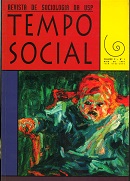The fear from police and the gross human rights violations
DOI:
https://doi.org/10.1590/ts.v9i1.86556Keywords:
Fear, Police, Violation, Human rights, Democratic consolidationAbstract
Democratic consolidation in Brazil continues to be confronted with challenges, in general, presented by legacies from the authoritarian regime. Democracy coincides with the economic crisis and a reduction of the state capacity to provide for services. Police performance is not improved in the democratic transition, much to the contrary it deteriorates. Violence and arbitrariness are also not reduced but grow with its inefficiency. The image that the public had of the police during the dictatorship is not re-structured but it continues to be negative. This bad image is sustained by the police’s poor performance, by its violence and arbitrariness and by the lack of externals controls over the police and thus of institutional channels for people to voice their complaints and qualms about police behaviour. Thus people are kept between the need for public security that should be provided by the police and the disbelief in it and even fear of it. The extreme ambiguity people feel towards the police: people tend not to trust the police but mistrust does not translate into demands for improvement of police performance or in demands for control over it. Much the contrary, mistrust often goes hand in hand with an acceptance of the arbitrary behavior from the police. The objective of the paper is to examine some of such contradictions.Downloads
Download data is not yet available.
Downloads
Published
1997-06-30
Issue
Section
Estratégias de Intervenção Policial no Estado Contemporâneo
License
Copyright (c) 1997 Tempo Social

This work is licensed under a Creative Commons Attribution-NonCommercial 4.0 International License.
How to Cite
Cardia, N. (1997). The fear from police and the gross human rights violations. Tempo Social, 9(1), 249-265. https://doi.org/10.1590/ts.v9i1.86556


